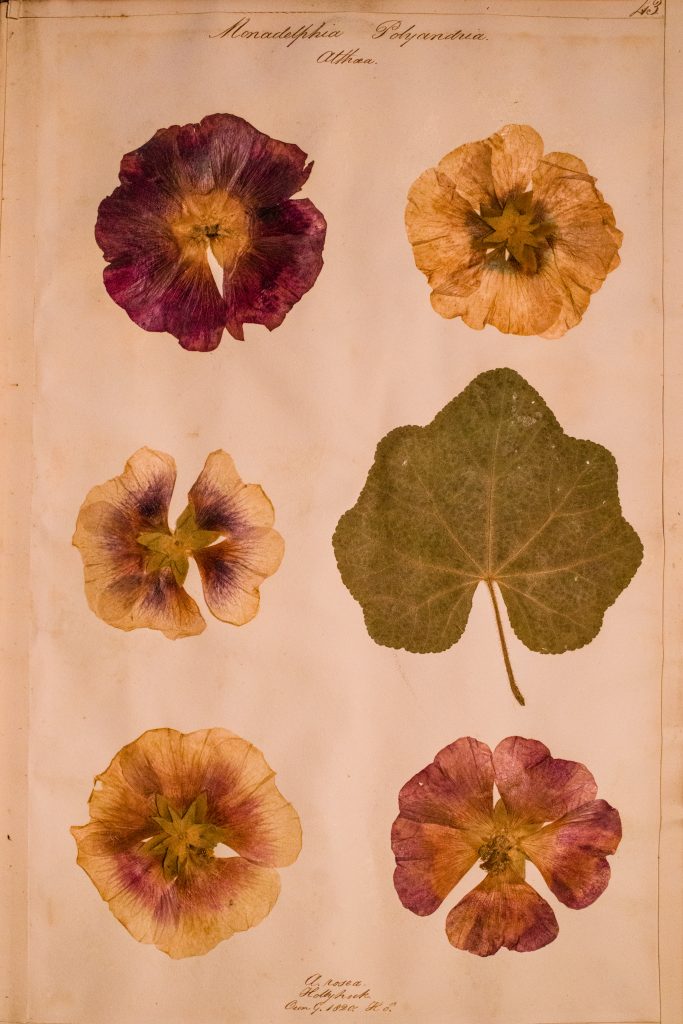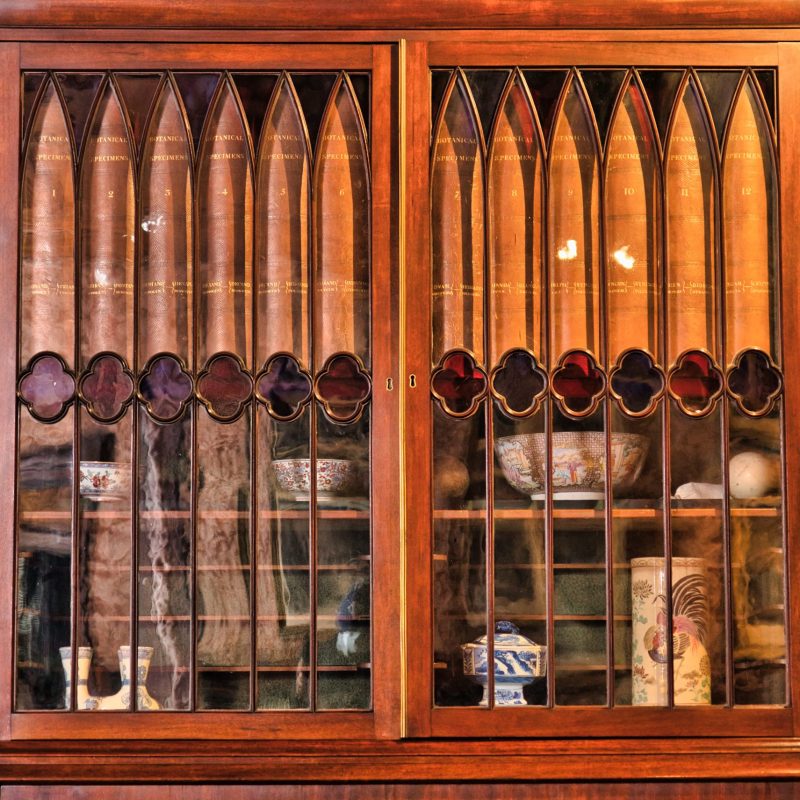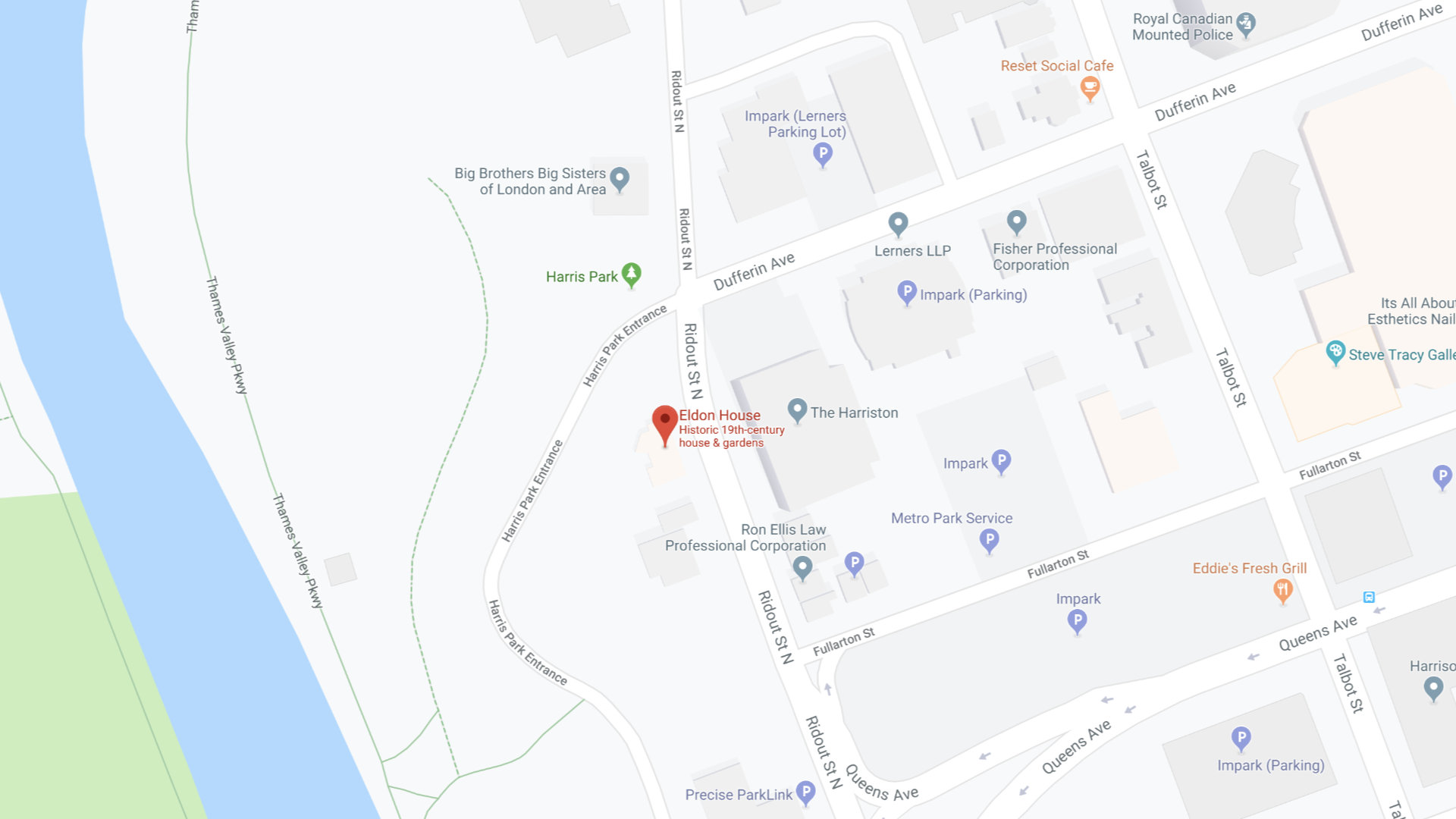Botanical Books

Country of Origin: England
Year: 1815-1822
Materials: Paper, plant material, and leather
A twelve volume Hortus Siccus and its purpose-designed mahogany cabinet are on display in the library at Eldon House. Most of the 2,089 species now represented were collected and arranged by Robert Ronalds in 1817-22. Robert and his son Hugh were the relations of Lucy Ronalds who would marry George Harris in 1867. Part of her inheritance from her father Hugh, were the botanical books and cabinet.
Inside the books, there are significant numbers of the plants. Many are from the Mediterranean, North American and, particularly, Australian in origin, reflecting the nursery’s global tentacles. Many came from the Ronalds nursery and old herbarium, as well as the Kew Botanic Gardens and the Horticultural Society’s garden, but they were also gathered from nearby nurseries such as Lee’s and such mundane locations as the ‘Thames’, ‘Brentd Canal’ and ‘Virginia Water’. Other sources were further afield, including the ‘Ruins of Chepstowe [sic] Castle’ in Wales and the ‘Alps’; the latter were gathered by Henry on a trip to Switzerland.

Hugh Ronalds Jnr was described in one of his obituaries as having ‘a very extensive knowledge of the different branches of science connected with Horticulture’. Another noted that: ‘During his early botanical studies, he formed an extensive Herbarium … This Herbarium is not now in existence, but some of the specimens have been rescued from decay, and preserved in a Hortus Siccus in the possession of his family.’ Robert wrote of his project: “I have now completed the arrangement of my Botanical specimens … placing each plant according to its place in the grand scheme of Linnaeus … At the top of each page I have written in a fair and legible hand the class, order, and genus; and under each species its name, both Linnaean and English, and the character and the letter, the former expressing it to be either a dry-stove, Stove, Greenhouse or hardy Plant, and the latter showing to be either a tree or shrub, a perennial, a triennial, or an annual plant … The Class and Order commencing each volume and those which end it are neatly expressed on the back of them in gold letters, and I have ranged the whole in a botanical cabinet furnished with glass doors … When we next spend an hour together you will be struck with the elegance of this piece of furniture which now forms a striking and an interesting object in my study.”
